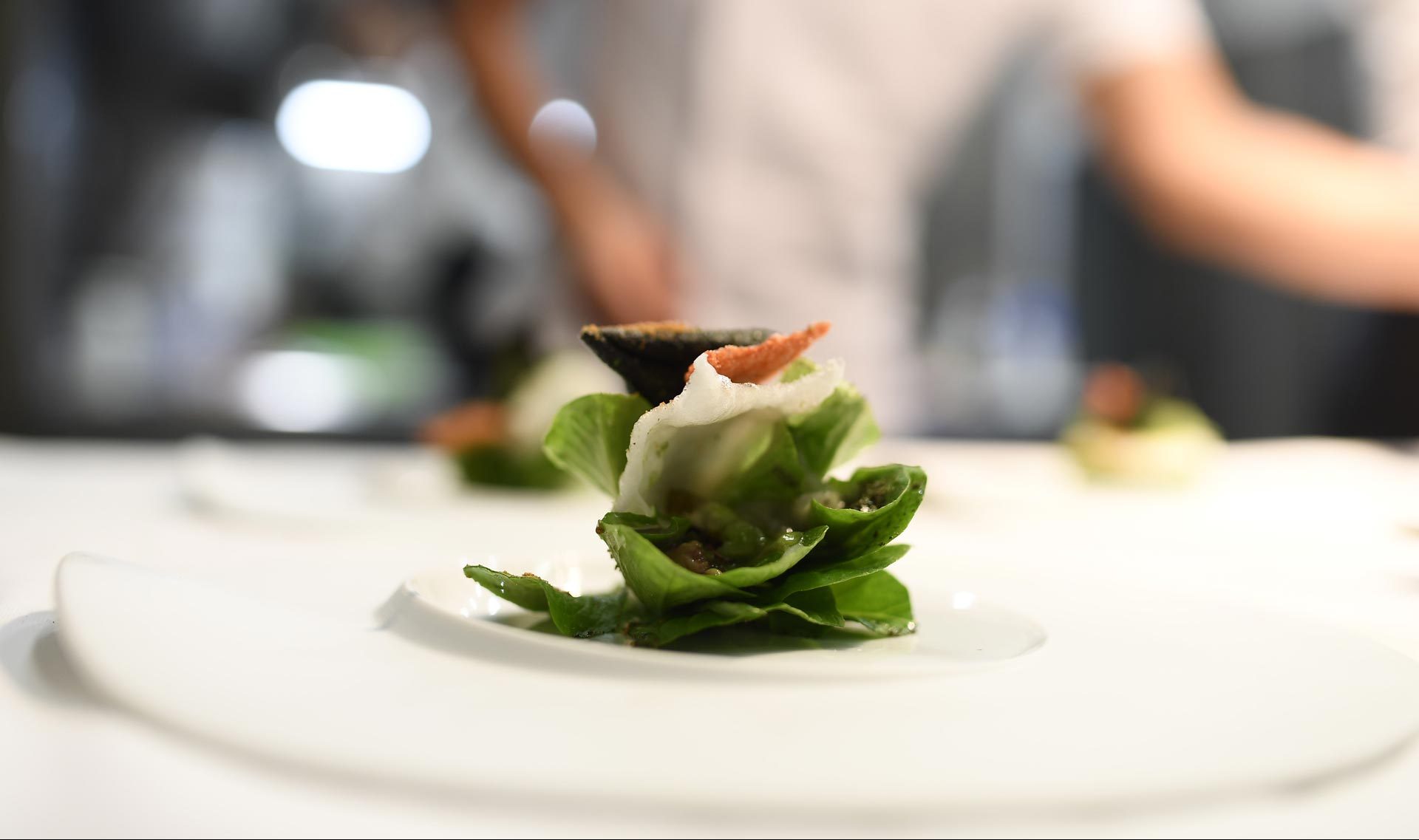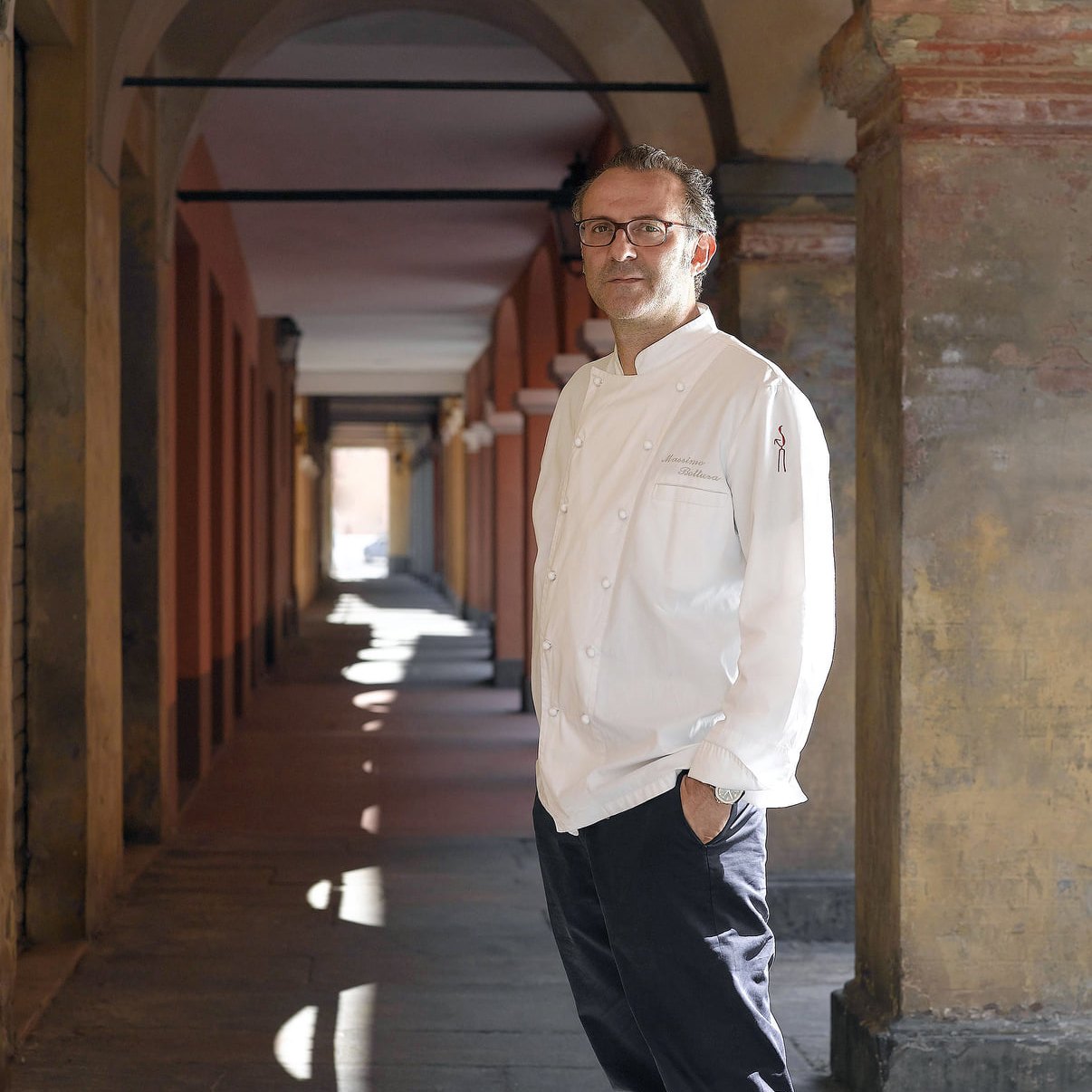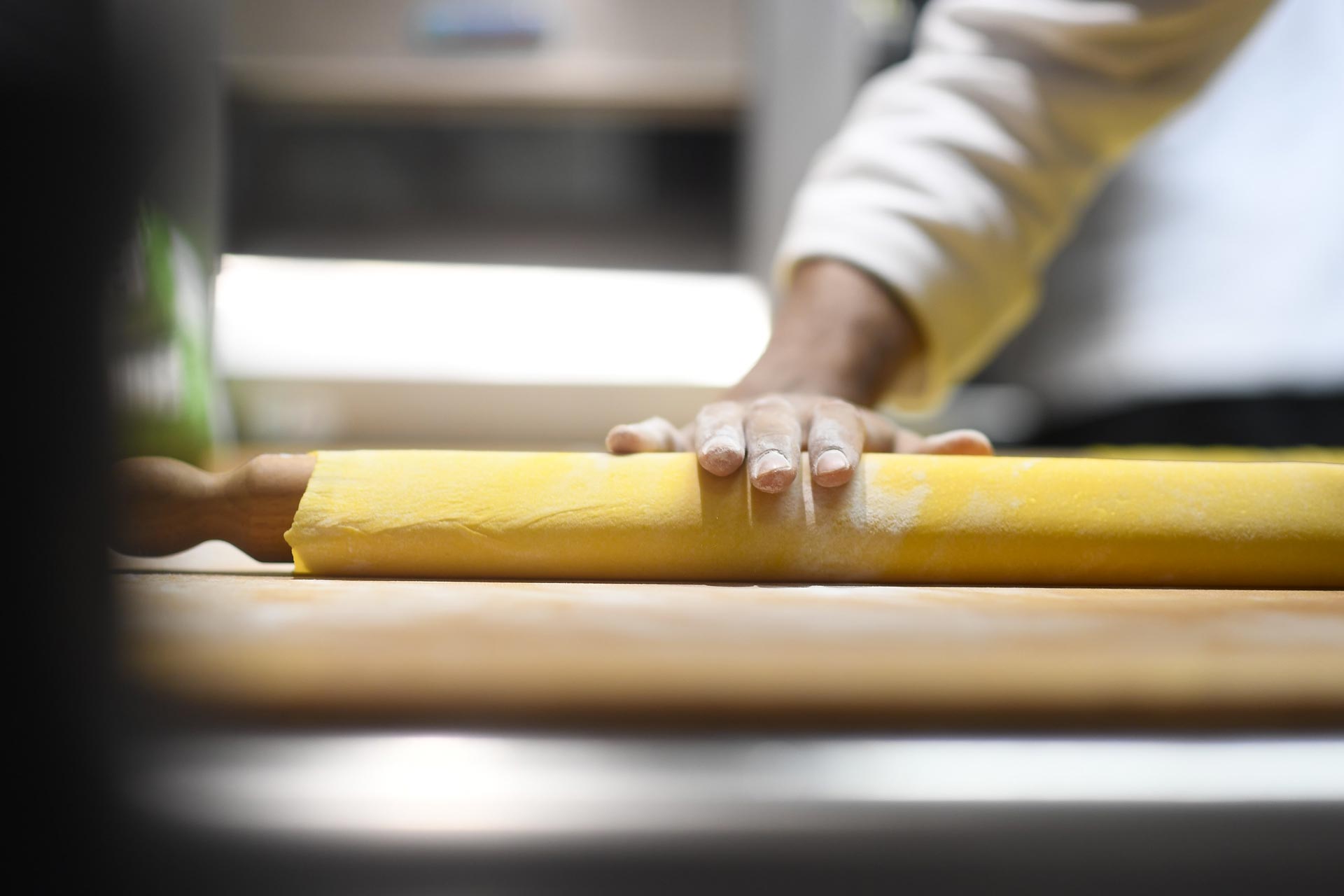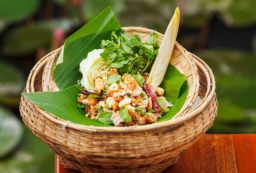
By India Gustin
Memory of a Mortadella Sandwich. A Potato that wants to become a Truffle. An Eel swimming up the Po river. These are all menu items found in a three Michelin-star restaurant. In Modena, Italy, Osteria Francescana stares down the barrel of reformed Italian cuisine. From an upside-down ice-cream to cherry spaghetti and foie-gras macarons, such a daring explosion of ingredients is hard to find in a fine-dining experience. This restaurant not only manages to do it with traditional Italian cuisine in mind, but does it with elegance and innovation at the forefront.

Osteria Francescana is located on a quiet street in Modena, Italy. It was named number one by the World’s 50 Best Restaurants not once, but twice. This also made it the first Italian restaurant to hold this prestigious milestone. Therefore, it is no surprise that it holds three Michelin stars. As with every top fine-dining experience, Osteria Franciscana offers intricate tasting menus and wine pairings. People all over the world have probably heard the name of the restaurant mentioned once or twice, whether for their accomplishments or from being featured on the first episode of Netflix’s, Chef’s Table. It is a restaurant-cum-modern-art-gallery, one that encompasses traditional Italian style with a clear blend in innovation and cultural diversity.

Massimo Bottura opened Osteria Francescana in 1995. However, his career as a chef and restaurateur wasn’t clear cut. Once he finished high school, Bottura enrolled in law school before dropping out and joining the family business as a wholesaler for petroleum products. That same year was when he decided to jump headfirst in the culinary world. He deepened his knowledge in French cuisine alongside Georges Coigny, then moved to New York to work at a cafe before returning back to Italy.

In 2000, Ferran Adrià invited Bottura to his restaurant (equally renowned, El Bulli), to teach him the basics of molecular cuisine. From then, his take on Italian cuisine has become known as traditional fine-dining, exploring the Italian roots through history, art and philosophy. He was awarded the Michelin stars in 2002, 2006 and 2012 respectively.
"Memory of a Mortadella Sandwich. A Potato that wants to become a Truffle. An Eel swimming up the Po river"
With names such as ‘Caesar Salad as a Pasta’ and ‘Consistencies of Milk and Herbs’, one has to wonder what the final dish will look like. The menu at Osteria Francescana plays into what Bottura hopes to achieve; an indefinite way to story-tell through food. The tasting menus rotate depending on the season, ensuring that each ingredient is appropriate for the time of year. It reaches broad lengths, including ingredients directly from Modena as well as Emilia Romagna. Whilst this may be the case, continuous exploration also plays into the chef’s ideology. As he describes it, it’s like “tradition seen from 10 kilometers away”.

Once seated, an array of sixteen dishes are brought out one by one from the tasting menu. Bottura likes to serve unexpected twists to otherwise classic plates. A steak dish which has it all expect for…the steak, for example. Or a caprese consisting of a red sauce made from tomato and red fruits which is served as a dessert rather than an appetizer. In fact, when opening his restaurant Bottura faced some difficulties in getting the locals to accept his vision. His courage to rethink such a rigid and classic cuisine made him look iconoclastic. Now, he is praised for having walked that fine line between traditional and innovative.

The restaurant is divided into smaller rooms. Guests are therefore seated with only a couple of other tables close by. This provides everyone with a more intimate dining experience. It’s no secret that Bottura has a passion for Italian cuisine. However, this passion is also translated in his choice of modern art.

Contemporary artworks fills the blank walls, adding an extra touch the element of storytelling. The interiors aren’t overbearing or extravagant, similar to the exterior. It is unassuming, leading anyone to be forgiven for not expecting a world-famous restaurant to be housed inside.
"His courage to rethink such a rigid and classic cuisine made him look iconoclastic. Now, he is praised for having walked that fine line between traditional and innovative"
The round tables and white table clothes give that classy detail, reminding everyone that they are in fact at a three Michelin-star restaurant. The translucent curtains and grey walls dim the dining areas, spotlighting the artwork on the facades as well as on the plate.

The aim at Osteria Francescana goes beyond serving up masterclass dishes. Bottura is working to make the invisible, visible. In 2016, him and his wife founded the non-profit association called Food for Soul. It acts to encourage communities to fight against the food waste issue: “The meals which we serve to vulnerable people in our refectories are prepared using excess food collected from local markets and supermarkets.” It supports social inclusion, promoting the idea of shared meals and connecting different disciplines.
In the 2015 Expo, Bottura created an off-site project called Refettorio Ambrosiano. It acted as a community kitchen, calling upon chefs from all around the world to use their culinary expertise to transform surplus food into healthy meals. After its success, the Italian chef knew he had to make this call-to-action permanent.
Having an Italian establishment being named as the world’s best restaurant two different times is no surprise. For centuries, this cuisine has left a huge mark in the culinary world. Therefore, keeping the basic elements true to tradition is a must to ensuring authentic Italian cuisine. Over the years, Bottura found a way to stand out from the crowd. Risking overstepping the fine line between authenticity and creativity, he created a space where classic Italian dishes becomes a thought-provoking experience.
















